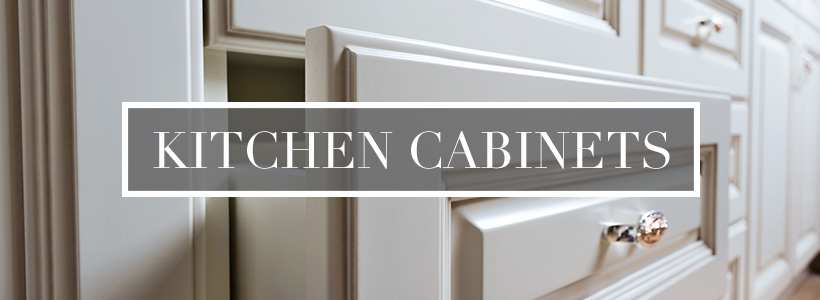
The very idea of giving your kitchen a makeover over the weekend without spending more than a couple of hundred dollars sounds so alluring, that people are jumping into it headlong without fully realising the pitfalls.
We are talking about painting kitchen cabinets, an idea that has taken off, thanks to social media.
DIYers love it.
But can you really paint your kitchen cabinet and end up with results that you can show-off?
Experts doubt it.
Because painting cabinets requires a fair amount of expertise and without it, you may end up with an eyesore that you will want to get rid of.
All said and done, if you have decided to go ahead and wield the brush, then here are 8 potential pitfalls that you would want to avoid while painting your kitchen cabinets.
Unrealistic Expectations
If you have old worn cabinets then painting it will not give it the super glossy uniform surface that you may expect. Many old cabinets have a very visible open grain which can be filled with putty. But that only makes the task more labour and time intensive. It may not be a weekend affair that you expect.
Not removing the doors and drawers
Is it really necessary to remove the doors and drawers? Can’t I just paint everything, hinges and all? Not a good idea. Removing the doors, drawers and hardware is a very important and crucial step of painting kitchen cabinets. Do not skip it.
Not labelling the removed doors and hinges
I just cannot emphasize enough on the importance of this step. Despite the fact that all hinges and doors may look the same, you need to label them to ensure that you fit them back in the right places. If you mix them up, they will not fit as well as they did earlier. You will be left with a cabinet door that sits a quarter of an inch higher than the rest.
Not laying them flat for painting
Laying the removed doors flat is the best way to ensure that you do not leave any area untouched. You can use a worktable or lay down some cans and keep the doors on top of it to paint. Once you paint one side and it dries, turn it over and paint the other side.
Not Cleaning Well
The cabinets will probably have layers of muck and grime that has built up over a period of years. If you just wipe it down, it will not clean the surface. You need to degrease the surface with a TSP substitute or a stronger degreaser if need be. Else the paint won’t stick on the surface.
Not Sanding
Irrespective of how good your cabinets are, you need to sand it to enable the paint to stick. While a 100-grit sandpaper works fine, you can even use 150 or 200 grit and buff it quickly. Ensure that you reach all nooks and crannies.
Not Priming
The quality of the paintjob will depend on the kind of prep work you do on the wood. Priming the wood might seem like an added task. But it is one of the most important ones. You do not want to see blotches on the cabinets a few weeks down the line. So prime it well. Use two coats if its needed.
Additional Articles about Kitchen Cabinets:
- 5 Storage Solutions for Kitchen Renovations
- All you Need to Know About Kitchen Cabinets
- DIY: Paint Kitchen Cabinets Like a Pro
- How to Get a Trendy Kitchen That Won’t Soon Be Outdated
- How to Select the Perfect Cabinet
- Important Questions to Ask When Shopping for Kitchen Cabinets
- Kitchen Cabinets: 7 Important Things to Know
- Kitchen Cabinets: You Don’t Have to Start from Scratch
- Kitchen Hardware
- Kitchen Remodelling: Cabinet Door Styles 101
- Light or Dark Kitchen Cabinets?
- Modern VS Old: Managing Contemporary Styles
- Redoing Your Kitchen Cabinets? 5 Trends to Know About
- Remodelling 101: Creating an Efficient Kitchen Space
- Shaker Cabinets: The Perfect Choice for All Kitchen Styles
- Should I Hire a Professional for My Kitchen Design?
- Simple Solutions for A Flawless Cabinet Installation
- Storage Solutions for Your Kitchen Made Simple
- The Benefits of Custom Designed Kitchen Cabinets
- Treasured Freatures: Cabinet Storage Trends in 2016
- Yes! You CAN Have Light Kitchen Cabinets and Dark Floors!
- What to Consider When Buying Kitchen Cabinets in 2020
- Kitchen Cabinets Designs: Which is Right for You
- Tips for Staining Kitchen Cabinets
- Cleaning and Caring for Kitchen Cabinets
- How to Choose Contractor for Kitchen Cabinet Installation
- Choosing Kitchen Cabinets: Stock or Custom
- Kitchen Cabinet Colour Schemes & Finishes
- Benefits of Ready to Assemble Kitchen Cabinets
- Tips for Choosing High-Quality Kitchen Cabinets in 2020
- 7 Timeless Colour Combos for your Kitchen cabinet
- 7 Ways to Maximize Storage Space in your Kitchen Cabinets
- 8 Mistakes you want to avoid while painting kitchen cabinets
- Choosing a Kitchen Cabinet Material: A Simple Guide
- Budgeting for your kitchen cabinets
- Cabinet Door Styles to spruce up your kitchen
- Painting your Kitchen cabinets
- The A2Z of Kitchen Cabinetry – Part 1
- The A2Z of Kitchen Cabinetry – Part 2
- The Complete Guide to Refacing your Kitchen Cabinets
- Things to ask your Custom Kitchen Cabinet Maker
- Care and Maintenance Tips for Your Kitchen Cabinets
- Adding More Cabinets to Your Kitchen
- Re-facing Your Tired Kitchen Cabinets
- Painting Your Kitchen Cabinets to Update the Look
- Why You Need to Update Your Kitchen Cabinets
- The Best Way to Clean Your Kitchen Cabinets
- Refreshing Your Kitchen Cabinets
- Ways to Update Your Kitchen Cabinets in 2020
- Are You Getting the Most Out of Your Kitchen Cabinet Space
- Are Your Kitchen Cabinets Making Your Kitchen Look Old and Drab
- Benefits of Choosing Custom Kitchen Cabinets
- Add 5 These Features to Your Kitchen Cabinets
- Painting Your Kitchen Cabinets Doesn’t Have to Be Hard: Tips to Help
- Learn How to Paint Your Kitchen Cabinets: The 101 Guide
- Your Kitchen Cabinet Buying Checklist
- Your Kitchen Cabinet Guide: What to Know and Look For
- Signs You Need to Replace Your Cabinets and Not Reface Them
- Beautiful Kitchen Cabinets: Door and Drawer Options
- Things to Consider When Choosing Kitchen Cabinet Pulls and Knobs





